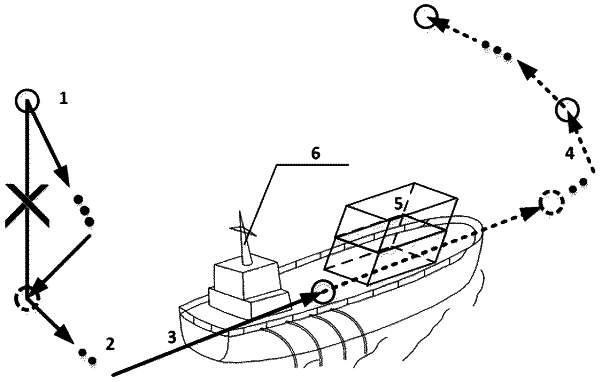| CPC G05D 1/0206 (2013.01) [B63B 79/20 (2020.01); B63B 79/40 (2020.01); G05B 17/02 (2013.01); G05D 1/0088 (2013.01); G08G 3/00 (2013.01)] | 7 Claims |

|
1. A scheduling method for fully autonomous waterborne inter terminal transportation, applied in an autonomous waterborne transportation system for dynamic scheduling of waterborne autonomous guided vessels (wAGV), comprising the following steps:
1) acquiring parameters involved in defining a wAGV oriented mixed integer programming dynamic scheduling model, modeling against a fully autonomous waterborne inter terminal transportation scheduling problem, establishing the mixed integer programming dynamic scheduling model based on the parameters, and solving the mixed integer programming dynamic scheduling model to obtain a starting optimal path for a scheduling system, the parameters including waterway distance which is not a straight line Euclidean distance and waiting time;
2) inserting a newly arrived transportation task into the possible positions in all the existing paths of wAGVs calculated in the previous step but has not been completely executed within a rolling horizon framework, and calculating the corresponding insertion cost, comparing and selecting paths and positions that are with the minimum cost, inserting the task into the path, processing all the newly arrived transportation tasks in turn and obtaining updated initial paths;
3) based on the updated initial paths, using a heuristic algorithm based on tabu search to further improve the initial path, and solving to obtain a final scheduling scheme at the current time step based on constraints of the dynamic scheduling model, the constraints including pickup followed by delivering and no transshipment, wherein the final scheduling scheme is paths of all the wAGVs; the paths of all the wAGVs include terminal node sequences to be visited by all the wAGVs, corresponding visiting times, service times and the number of loading and unloading containers in TEUs;
4) scheduling the wAGVs according to the paths of all the wAGVs obtained by the solution, and repeating steps 2) to 4) for each new time step.
|